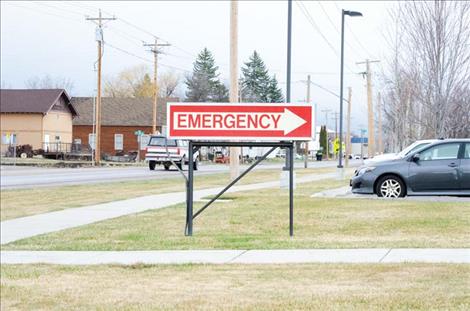Hospitals prepare for increase in COVID-19 cases
Hey savvy news reader! Thanks for choosing local.
You are now reading
1 of 3 free articles.
LAKE COUNTY – Healthcare providers know it’s just a matter of time before more people come down with the virus locally.
Abigail Byers, St. Luke Community Healthcare’s director of nursing, said the hospital has different options for how to deal with the virus, depending on how the situation plays out in the area. “It will depend on how sick our patients are,” Byers said. “We will serve our community, whatever happens.”
According to a report by the Centers for Disease Control, most cases of COVID-19 do not require hospitalization. According to the CDC report, 45 percent of hospitalizations due to COVID-19 were for people above the age of 65. Those who have preexisting conditions like asthma and diabetes are also at higher risk of serious illness.
Hospitals in other places around the country that have been hit hard by the virus have struggled to have enough equipment, room and staff to care for large waves of infected patients. According to the St. Luke website, the hospital has 25 beds for patients on a regular basis.
According to Byers, hospitals have been given a number of waivers that allow them to adjust and prepare for a potential influx of serious cases; for example, hospitals around the region have collaborated to create contingency plans and coordinate their care.
St. Luke in Ronan has created a curbside screening system to identify people who could potentially have COVID-19 and attend to them without risking the spread of the virus inside the hospital. Patients stay in their cars and wait for an available healthcare provider. The provider approaches the car in protective gear and evaluates whether the patient could potentially have the novel coronavirus.
Byers said keeping patients outside the hospital until they have been evaluated for COVID-19 helps prevent the spread inside the hospital to other patients or staff.
Providers ask patients if they’ve recently traveled, have a cough, fever or shortness of breath, which are common symptoms of COVID-19. If providers do suspect the individual might have the virus, they test them for other similar ailments like flu and strep throat. If those tests come back negative, the provider will provide a COVID-19 test, if appropriate.
Lake County healthcare providers have had the opportunity to learn from healthcare systems that have already treated large volumes of patients with the virus. Byers talked with leaders from Providence Health and Services in Seattle to hear recommendations about how to minimize the impact of the virus in Lake County. In order to ensure that healthcare providers aren’t carrying the virus themselves, everyone on staff at St. Luke has their temperature taken each day to monitor for fevers, which is an early sign of COVID-19. Staff are also being screened daily for symptoms. Employees are discouraged from traveling out of the area.
Byers said healthcare providers need community support in order to effectively serve those who do develop serious symptoms. “We can do our jobs better if you do your job by staying home,” Byers said. If people in Lake County stay in their homes, it will reduce the speed at which the virus infects people in the community. If fewer people get the virus, fewer will need to be hospitalized, and healthcare providers will be able to give high-quality care to those who need it.
“I think this last week was the calm before the storm,” Byers said. “We just don’t know when the storm is going to hit.”
















